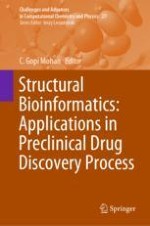2019 | OriginalPaper | Chapter
Turbo Analytics: Applications of Big Data and HPC in Drug Discovery
Authors : Rajendra R. Joshi, Uddhavesh Sonavane, Vinod Jani, Amit Saxena, Shruti Koulgi, Mallikarjunachari Uppuladinne, Neeru Sharma, Sandeep Malviya, E. P. Ramakrishnan, Vivek Gavane, Avinash Bayaskar, Rashmi Mahajan, Sudhir Pandey
Published in: Structural Bioinformatics: Applications in Preclinical Drug Discovery Process
Publisher: Springer International Publishing
Activate our intelligent search to find suitable subject content or patents.
Select sections of text to find matching patents with Artificial Intelligence. powered by
Select sections of text to find additional relevant content using AI-assisted search. powered by
